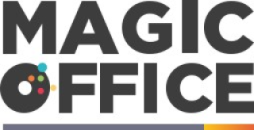
Understanding the Importance of Feedback in UK Companies
The Value of Feedback for Continuous Improvement
For companies operating in the United Kingdom, gathering feedback is pivotal to maintaining a competitive edge and enhancing overall performance. Feedback, collected through various surveys and form templates, becomes the cornerstone for refining processes, improving customer satisfaction, and adapting to market changes.
One of the most effective ways to collect valuable insights is through a well-structured, user-friendly form, like a Google Form, which allows businesses to efficiently navigate overlapping schedules and priorities. Feedback forms can provide a multitude of data points that companies can analyze to fine-tune their operations and strategies, further empowering them to stay ahead in a dynamic environment.
Feedback collection is not just beneficial for understanding customer sentiments; it is also essential for recognizing staff needs and expectations. This dual focus on customer and employee insights helps create a more cohesive and effective business environment. Free templates and online form builders such as Google Forms make it easier than ever to streamline this process, adding features that facilitate smooth data collection, whether for customer feedback or employee surveys.
To maximize the potential of feedback systems, emphasis should be placed on the ease of form creation. It's critical to create forms that encourage high response rates, ensuring relevant and actionable feedback is collected. Responses gathered can be seamlessly synchronized with Google Sheets for further analysis, allowing companies to identify patterns and make informed decisions.
Ultimately, by adopting a systematic approach to feedback collection, companies can unlock new opportunities for improvement and innovation. Thus, implementing holistic feedback systems is a step toward ensuring alignment between company goals and stakeholder expectations, as well as fostering a culture of continuous growth.
To learn more about effective strategies to accommodate such systems, navigate overlapping timetables in UK offices and ensure that your feedback procedures are efficiently integrated into the broader company operations.
Why Choose a 5-Star Rating System?
The Appeal of Using a Rating System in Forms
When managing feedback collection in UK companies, the choice of methodology can significantly impact the quality of data received. A 5-star rating system offers a simple yet effective way to collect responses, making it a preferred choice for many organizations. But what makes it stand out?
Firstly, the clarity and ease-of-use associated with a 5-star system are unmatched. Respondents can quickly provide their opinion on a linear scale, allowing for increased participation rates. This simplicity reduces the time required to fill out forms, ensuring better response rates and more comprehensive data collection. The visual appeal of stars can add an element of engagement, encouraging honest and reflective feedback.
Additionally, using a 5-star system on platforms like Google Forms allows for seamless integration into your current data collection processes. These forms are versatile and can be customized to meet various needs, whether you're collecting feedback after an event or assessing employee satisfaction. By utilizing Google Workspace features, your form templates can be shared easily via email, broadening your reach and efficiency in obtaining responses.
Beyond ease and accessibility, the 5-star rating method facilitates a straightforward analysis of responses. By converting subjective opinions into quantifiable data, businesses can identify patterns and trends efficiently. This streamlined data analysis process aligns well with the needs of office managers who might be juggling multiple duties.
In such dynamic environments, where navigating overlapping timetables in UK offices can be a challenge, integrating a well-designed 5-star feedback form ensures that you capture critical insights without burdening your schedule. By implementing this rating system in your online form, you not only enhance your feedback collection mechanisms but also pave the way for insightful analysis and informed decision-making.
Creating a Google Form Template for 5-Star Ratings
Designing an Effective Google Form for Ratings
When aiming to collect valuable feedback from customers or employees, integrating a Google Form template with a 5-star rating system can simplify data collection while providing clear, quantifiable results. Using Google Forms to create a feedback form allows for flexibility and scalability to suit various business needs in the UK.
To start, sign into your Google Forms account. Once there, opt to create a new Google Form. Leveraging the user-friendly interface, add a section for your 5-star rating by selecting the "Linear Scale" option. Adjust the scale to reflect a range between 1 and 5 stars, representing the feedback spectrum from poor to excellent.
Incorporate the essential sections you require, such as contact details, to keep responses organized. By clicking on "Forms Add-ons", you can enhance functionality and automate processes through additional features and integrations. Consider using "Google Sheets" to automatically compile responses, facilitating easier analysis and reporting.
Here are some tips to enhance your Google Form while designing your template:
- Clearly label each section and question to minimize confusion.
- Add descriptions to guide users on how to fill out forms effectively.
- Customize the design by using themes that resonate with your company's branding.
- Utilize "Sections" within the form to streamline the data collection process for different feedback categories.
By creating an adequately structured Google Form for feedback, businesses can streamline data collection, paving the way for efficient analysis. This enables more timely adjustments to products or services, ultimately enhancing customer and employee satisfaction. For more insights on streamlining office operations, check out our comprehensive guide on enhancing office efficiency with business document holders.
Customizing Your Google Form for Specific Needs
Tailoring Your Google Form to Meet Specific Requirements
Customizing your Google Form is crucial to ensure it aligns with your company’s unique feedback needs. With the right adjustments, you can transform a basic template into a powerful tool for collecting valuable insights. Here’s how you can make the most of Google Forms to gather meaningful responses:
- Identify Key Questions: Start by determining the specific areas where feedback is most needed. This could be related to a recent event, product launch, or service improvement. Use questions that encourage detailed responses, such as open-ended questions or a linear scale for more nuanced feedback.
- Utilize Google Form Features: Google Forms offers a variety of features that can enhance data collection. You can add sections to organize questions, use conditional logic to guide respondents through the form, and include different question types to diversify the feedback.
- Incorporate Branding Elements: Customize the form’s appearance to reflect your company’s branding. This includes adding your logo, choosing a color scheme that matches your brand, and using a professional tone in the questions and instructions.
- Integrate with Google Sheets: For efficient data analysis, link your form to Google Sheets. This integration allows you to automatically collect responses in a spreadsheet, making it easier to sort, filter, and analyze the data.
- Test the Form: Before distributing the form, test it to ensure all features work as intended. Check for any issues with navigation, question clarity, and data collection to avoid confusion among respondents.
By customizing your Google Form, you not only enhance the quality of the feedback collected but also streamline the process for respondents, making it more likely they will provide thoughtful and comprehensive responses.
Analyzing Feedback Data for Better Insights
Interpreting Feedback Effectively
Once you've created and customized your Google Form to collect feedback, it's essential to understand how to analyze the gathered data effectively. This step will allow you to identify patterns and insights that can drive meaningful improvements within your organization.
Organizing Responses
First, navigate to your forms on Google Forms to access the Responses tab. Utilizing Google Sheets integration can help you organize and review your feedback more efficiently. Each submission from your feedback form can automatically be sent to a Google Sheet, creating a centralized repository for data analysis.
Analyzing Rating Patterns
Google Forms often includes built-in summary tools which provide automated data visualization through charts and graphs. These visuals can be well-suited for identifying trends in responses or spotting frequently recurring feedback themes. Explore the various linear scale and multi-choice question types within your form to assess different aspects of your service or product.
Generating Detailed Insights
For more detailed analysis, exporting data to Jotform or a similar form builder can provide added depth with features like advanced filtering or cross-sectional analysis. This flexibility ensures that, regardless of your specific objectives, you can tailor your data examination to draw out the most relevant insights.
Leveraging Free Tools
Google Workspace offers numerous free tools that can significantly enhance your ability to interpret feedback. Take advantage of Google Docs for report generation or bundled applications for deeper collaboration, ensuring the efficiency and effectiveness of your feedback analysis process.
Best Practices for Implementing Feedback Systems
Strategies for Successfully Collecting Feedback
To effectively utilize feedback collection systems, UK companies should adopt certain practices. These strategies not only enhance the effectiveness of your 5-star Google Forms but also optimize the data gathered for actionable insights.
Simplify User Experience with Intuitive Templates
Creating an intuitive user experience is crucial. To do this, you should leverage various features of the Google Form builder. For instance, a linear scale can be a simple yet effective way to gauge detailed opinions. Additionally, consider adopting form templates that streamline the process, ensuring it is hassle-free for respondents.
Encourage Honest Feedback through Anonymity
Offering anonymity often leads to more genuine responses. With the Google Form settings, you can choose not to collect email addresses, thus encouraging honest and unbiased feedback. This will not only improve the authenticity of the feedback but also enhance trust in the feedback system.
Utilize Google Workspace for Seamless Integration
Integrating your feedback collection with Google Workspace can significantly ease data management. When responses are collected, they can seamlessly populate into Google Sheets, providing a streamlined approach to organizing data. Additionally, this integration can be customized further to suit your specific requirements by accessing various options within Google’s suite.
Regular Review and Analysis of Feedback Data
Once you gather feedback responses, regularly reviewing the data is essential. By using Google Sheets, you can easily navigate and analyze the information. Consider looking for patterns or common suggestions, which can lead to valuable insights. This process not only enhances decision-making but also ensures continuous improvement within the office environment.
Consistent Communication Post-Feedback
After analyzing the data, it is vital to communicate findings and actions back to the respondents. This can be facilitated through follow-up emails or updates, which can be effectively organized using your existing Google Workspace setup. Socializing the results helps maintain engagement and encourages continued participation in feedback processes.
Implementing these best practices will ensure that your feedback collection efforts lead to meaningful improvements and a more engaged team.












